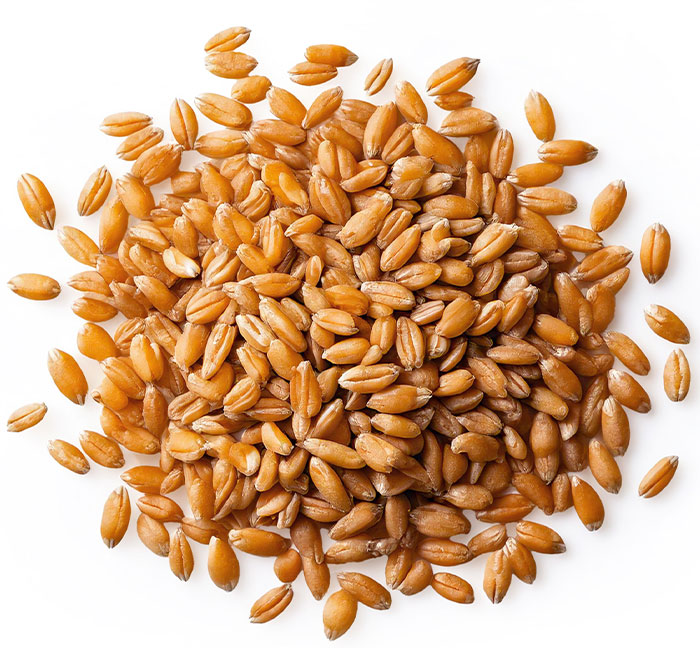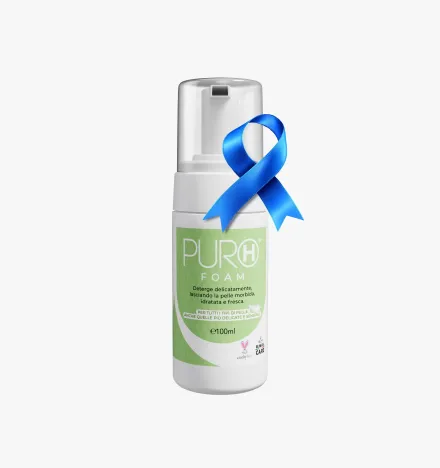Prebiotics
A NOURISHMENT THAT REGENERATES FROM WITHIN
Invisible but essential, Prebiotics support the gut ecosystem by selectively nourishing beneficial bacteria. Symbols of balance and regeneration, prebiotics play a central role in modern health, fostering a profound link between nutrition and daily vitality.

NAME
Prebiotics
WHERE IT IS USED
medicine, cosmetics, nutrition
The Benefits of Prebiotics
PROPERTIES AND BENEFITS
Acidifiers
lower the intestinal pH by creating an environment that is hostile to pathogens and conducive to the growth of "good" bacteria.
Anti-inflammatories
help prevent inflammatory diseases, thanks to short-chain fatty acids, such as Butyric.
Soothing
reduce inflammation and irritation by promoting the balance between beneficial and pathogenic bacteria, both in the gut and skin.

Rimineralizing agents
increase the bioavailability of minerals such as Calcium and Magnesium, supporting bone health and metabolism.
Depuratives
limit the production of toxic substances by pathogenic flora, protecting the intestinal mucosa and the entire body.

Curiosities
Prebiotics are found naturally in a variety of foods, including whole grains, legumes, fruits and vegetables such as onions, garlic, leeks, artichokes, chicory, and bananas, as well as honey and some fermented dairy products.
Index
What are prebiotics
Prebiotics are nondigestible organic substances that play a crucial role in the balance of the intestinal microbiota, acting as nutrients for beneficial bacteria such as Bifidobacteria and Lactobacilli. These substances, mainly water-soluble fibers, reach the colon unaltered, where they are fermented by the intestinal flora, promoting a more acidic environment and the absorption of essential minerals such as Calcium and Magnesium.
Among the best-known types are Fructo-oligosaccharides (FOS), Galacto-oligosaccharides (GOS), and Inulin, which is particularly studied for its contribution to mineral salt absorption.
These substances not only support gut health, but offer systemic benefits: they strengthen the immune system, improve metabolism, and can counteract the side effects of antibiotics. Recent studies also show their potential in maintaining a healthy microbiome on the skin, demonstrating their essential role in the overall well-being of the body.
History of Prebiotics
The discovery of Prebiotics represents a crucial milestone in understanding the link between nutrition and gut health. The concept was developed in the 1990s, a time when science began to explore in depth the human microbiota, or the collection of microorganisms that populate our gut. The goal was clear: to enhance the body's well-being by acting directly on the gut flora.
Until then, the main focus had been on Probiotics, live bacteria administered through food or supplements. However, their effectiveness was often limited by the difficulty of survival in the gastrointestinal tract. This limitation prompted researchers to pursue a new avenue: providing "nourishment" to beneficial bacteria already present in the gut, stimulating their growth and viability.
Prebiotics and Probiotics: what are the differences?
Although they are often confused or mentioned together, Probiotics and Prebiotics play distinct but complementary roles in supporting gut health. Prebiotics are naturally occurring substances found in some foods, such as plant fibers, that act as nutrients for beneficial bacteria.
Probiotics are live microorganisms that directly benefit the body by helping to rebalance the gut microbiota.
In summary, Probiotics are the "inhabitants" of the intestinal flora, while prebiotics represent their "food," which is essential to promote their growth and effectiveness.
It was Marcel Roberfroid, a Belgian biochemist, who coined the term "Prebiotic" in 1993, defining these substances as non-digestible food components capable of positively influencing the human organism through selective support of the intestinal microflora. Among the first substances studied were Oligosaccharides, particularly Fructo-Oligosaccharides (FOS) and Inulin, both found in foods of plant origin.
In addition to the renewed interest in dietary fiber, the identification of Prebiotics marked an important step forward: not only was the fundamental role of the microbiota for the immune system and metabolism beginning to be understood, but also the foundations were being laid for an innovative approach to nutrition and wellness.
Since that time, the study of Prebiotics has evolved, expanding into new categories of substances that, in addition to classical carbohydrates, are revealing increasing potential in regulating the microbiota. Today, Prebiotics are recognized as a milestone in gut health research and overall.
Properties
Prebiotics are known for their extraordinary beneficial properties, which positively influence various aspects of the body's well-being. Here are the main ones:
- Balancing the skin microbiome: Through their ability to support beneficial bacteria, Prebiotics help balance the skin microbiome. They foster an environment in which "good" bacteria prevail over pathogens, reducing inflammation and promoting skin regeneration. This balance helps maintain healthy skin by strengthening its natural barrier and improving its resistance to external aggressions.
- Stimulation of gut microflora: Prebiotics act as selective feeders for beneficial bacteria in the gut, such as Bifidobacteria and Lactobacilli. Their fermentation by the intestinal flora produces short-chain fatty acids (SCFA), such as Butyric Acid, which create an unfavorable environment for pathogenic bacteria. This promotes a reduction in toxins produced by pathogens, such as Ammonia and Secondary Bile Acids, and contributes to improved intestinal health.
- Acidification of the intestine: fermentation of Prebiotics leads to a decrease in fecal pH, acidifying intestinal contents. This more acidic environment is ideal for intestinal symbionts, while hindering the development of harmful microorganisms.
- Protection against inflammation and disease: short-chain fatty acids produced by prebiotics have anti-inflammatory properties, supporting protection against chronic gut diseases, such as Crohn's disease or ulcerative colitis.
- Mineral absorption support: improve the absorption of essential minerals, such as Calcium and Magnesium, by increasing their bioavailability. This effect is particularly important for supporting bone health and overall metabolism.
- Toxin reduction: help limit the production of toxic metabolites by pathogenic flora, such as Biogenic Amines, Nitrosamines and Secondary Bile Acids.
Uses
Prebiotics, often in combination with probiotics, find application in a variety of areas, with promising results in improving skin health and the skin microbiome in particular situations such as:
- Acne: studies have shown that topical application of solutions containing the probiotic Lactobacillus plantarum can reduce acne lesions, accelerate skin barrier repair, and improve the balance of the microbiome.
- Eczema: Oral intake of probiotic supplements has been associated with a reduction in eczema severity, even in moderate to severe cases. Prebiotics, by promoting the growth of beneficial bacteria, can help improve the microbiome and reduce inflammation.
- Psoriasis: recent research suggests that certain Lactobacillus strains may reduce inflammation and modulate psoriasis symptoms, offering a new approach to controlling this chronic condition.
Prebiotics, in synergy with Probiotics, help establish a healthier environment for the skin. Through their action, they reduce the proliferation of pathogenic bacteria and promote a stable microbiome, which improves skin barrier function and promotes tissue regeneration.
In addition, prebiotic creams are particularly effective in preserving the beneficial bacteria already present in the skin by promoting the growth and survival of probiotic microorganisms. This helps maintain a balanced microbiome, improving the skin's ability to resist infection, inflammation and environmental stresses.
The extraordinary properties of Prebiotics are perfectly integrated in Puro H® Foam, the plant-based cleansing mousse that combines the benefits of these rebalancing microorganisms with natural ingredients such as Hypericum Flower Oleolite, known for its soothing and regenerating properties. Thanks to Probiotics and Prebiotics, Puro H® Foam promotes the maintenance of the skin's microbiota, helping to preserve the skin's natural balance.
Ideal for sensitive and delicate skin, Puro H® Foam removes impurities while respecting physiological pH, deeply moisturizing. Prebiotics work by strengthening the skin barrier, reducing irritation and protecting the skin from external aggressions. Perfect for those who want gentle yet effective cleansing, Puro H® Foam is a daily ally for improving the health and well-being of the skin, enhancing its natural ability to regenerate itself.
Other uses
In addition to cosmetics, Prebiotics have applications in nutrition and in supporting mental and physical well-being.
Supplements and foods containing Prebiotics can improve the gut and skin microbiota, positively affecting conditions such as acne, eczema, and psoriasis.
In parallel, Prebiotics prove useful in counteracting the negative effects of chronic stress, which often disrupts the balance of the microbiota. By promoting the growth of beneficial bacteria, Prebiotics help restore the body's balance, with tangible benefits on sleep quality and the ability to better cope with periods of stress. This makes them a key element in overall well-being beyond traditional dietary uses.
Contraindications
Taking Prebiotics is generally safe and without significant contraindications. However, it is important to read the directions on the products carefully and, if you have any concerns or special health conditions, to consult a physician. This is especially recommended for those with specific gastrointestinal disorders to ensure that prebiotics are suitable for their needs and supplemented properly.
Products with Prebiotics
Prebiotics are one of the main components of the PURO H® line, designed for cleansing and moisturizing the face and body.
Subscribe to our newsletter and get 10% off!
Stay up to date with the latest news, promotions, and exclusive offers from RI.MOS. CARE.

Do you have a question?
Our team of experts has an answer for you!
What is the difference between tissue regeneration and repair?
In case of injury, the physiological reflex of the organism and thus of the tissues is to evolve toward a regenerative and/or reparative process.
The difference between these two mechanisms is:
- Regeneration:
damaged tissues are replaced with cells of the same type. - Repair:
damaged tissues are replaced with connective tissue (fibrosis).
Why is the use of topical steroidal anti-inflammatory drugs (cortisone ointments) not recommended to treat an injury?
Steroidal anti-inflammatory drugs cause the scarring process to stop, torpid sores, promoting the development of bacterial and fungal infections.
Why is the use of disinfectants not recommended to treat an injury?
Disinfectants (based on iodine, chlorine, oxygen peroxide, etc.) are known to be histolesive. Used to ward off infection risks, they themselves become detrimental to tissue repair, being very potent inhibitors of cell proliferation, both of fibroblasts and keratinocytes.
The use of disinfectants, depending on the stage of the injury, causes these effects:
- re-initiation of the inflammatory process;
- pathological prolongation of the inflammatory phase;
- failure to progress to the granulation stage;
- stopping the granulation phase;
- inhibition of re-epithelialization;
- scar fibrotization (poor quality scarring).
What are the stages of wound healing?
There are three stages of wound healing:
- Stage 1: exudative or inflammatory or also called cleansing stage
- Stage 2: granulation or proliferative phase (granulation tissue formation)
- Stage 3: epithelialization or regenerative phase (scar formation and epithelialization)
What does "primary dressing" mean?
A primary dressing is one that is placed in direct contact with the injured tissues and interacts with the physiological processes of the injury.
What does "secondary dressing" mean?
A secondary dressing does not interact with the wound, but serves to:
- fill a cavity to absorb excess exudate and maintain the primary dressing over the wound;
- cover a wound to protect it while absorbing excess exudate and maintaining the primary dressing on the wound;
- Fix other secondary dressings and/or the primary dressing on the site of the injury.


